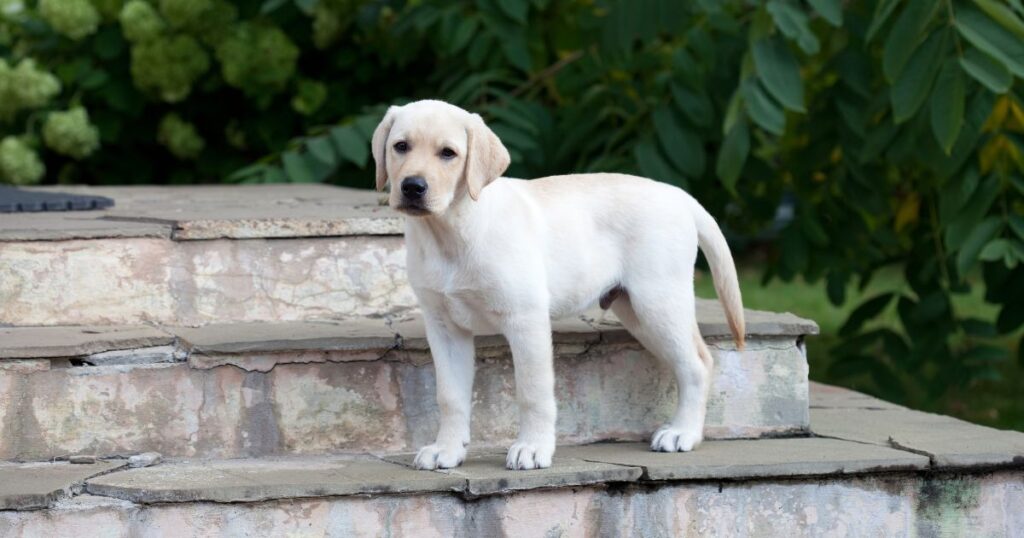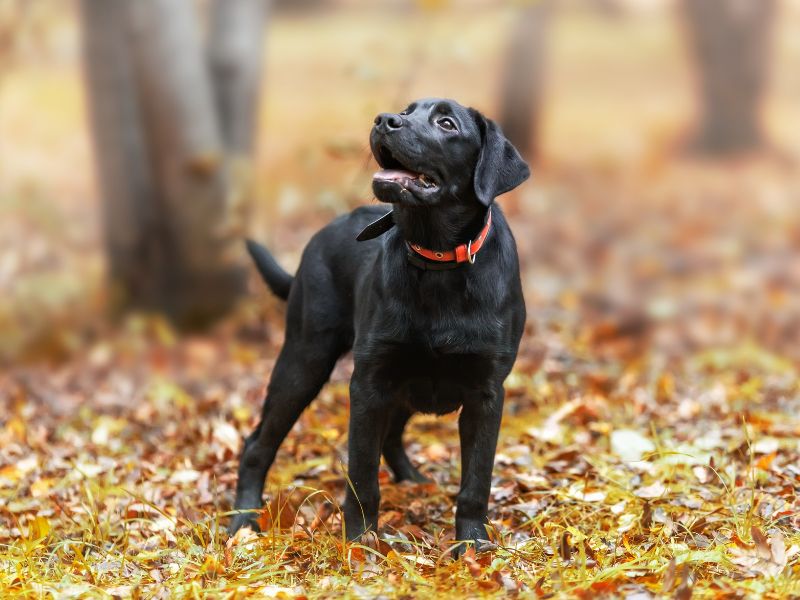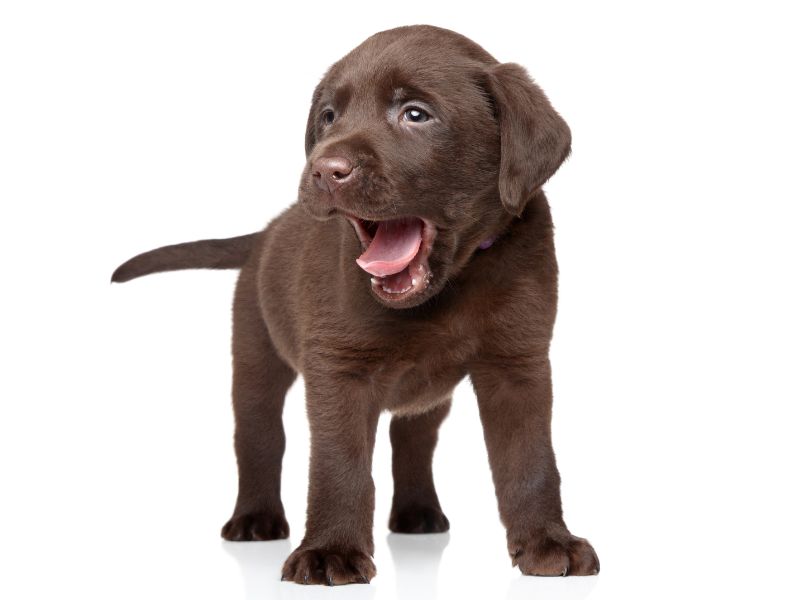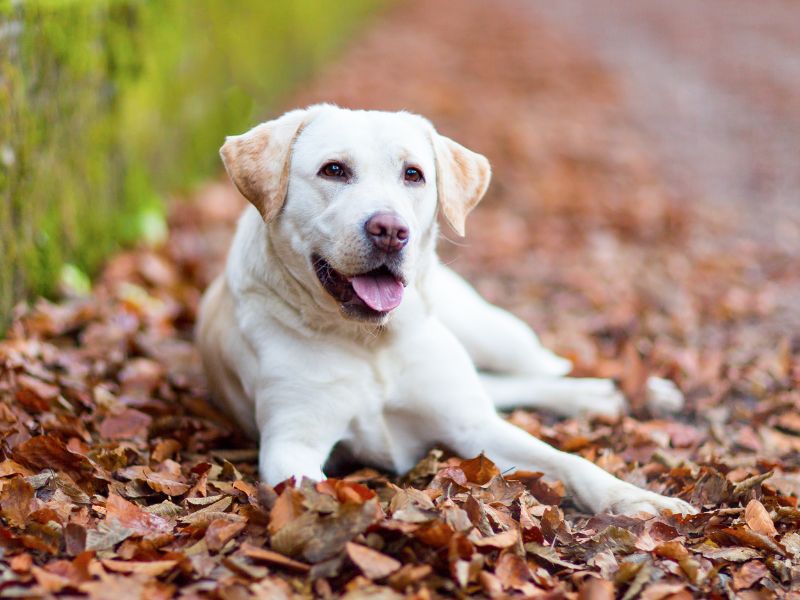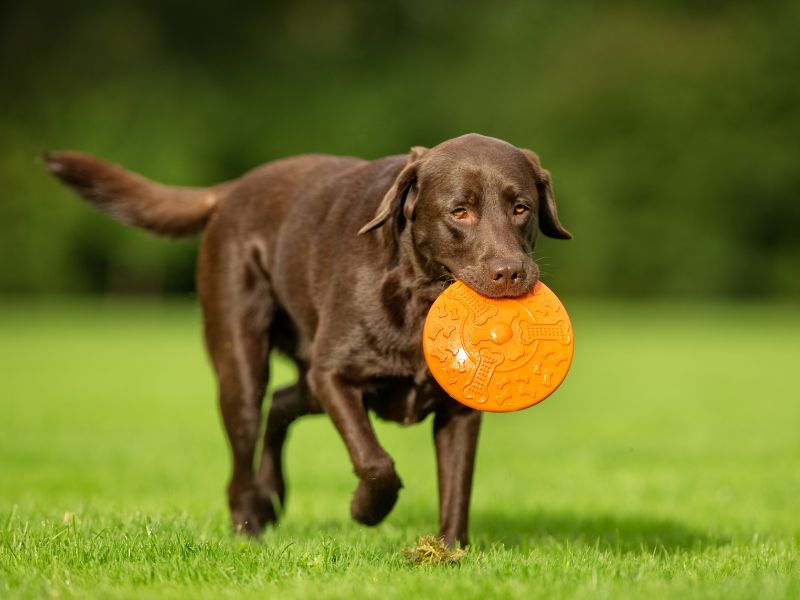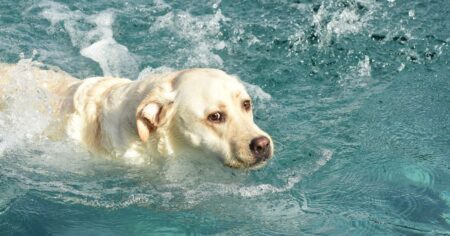Miniature Labradors have been gaining popularity among dog enthusiasts, offering a smaller version of the beloved Labrador breed. These pint-sized pups are bred to be a more compact and manageable addition to families who might not have the space or energy for a full-sized Labrador. By combining the lovable characteristics of a Labrador with a smaller size, the miniature Labrador aims to provide the best of both worlds for pet owners.
These small Labradors are born from two purebred Labrador parents who both carry the recessive dwarfism gene, resulting in a dog with notably shorter legs. Mini Labs typically grow to be around 20-22 inches (51-56 cm) in height and 30-50 pounds (14-23 kg) in weight. Despite their shorter stature, these dogs inherit the same friendly, intelligent, and loyal temperament that has made Labradors a top choice for families around the world.
While the concept of a miniature Labrador may seem appealing, potential owners should be aware that, like all dogs, they have their own unique set of needs and potential health concerns. It is essential to thoroughly research the breed and consider these factors before making the decision to welcome a mini Lab into your home. With proper care, these pint-sized companions can make a cherished pet and a delightful addition to any family.
What Is A Miniature Labrador?
A miniature Labrador is a smaller version of the popular Labrador breed, often seen as a perfect family pet due to their loving and friendly nature. These smaller Labs result from a genetic condition called dwarfism. They carry all the characteristics of a typical Labrador, such as their playfulness, intelligence, and gentle temperament, but in a more compact size.
Measuring less than 14 inches in height, miniature Labradors usually weigh between 20 and 40 pounds. In contrast, standard Labradors can range from 21 to 25 inches tall and weigh up to 80 pounds. This makes the miniature Labrador appealing to those who want a Labrador companion but do not have the space or ability to accommodate a larger dog.
It is essential to note that most miniature Labradors are not mixed breeds but rather the result of the naturally occurring genetic condition mentioned earlier. Designer breeds like the Cavador, Cockador, or Chihuahua Lab mix are different and are intentionally bred for their smaller size and unique traits.
In summary, a miniature Labrador is a lovable and friendly companion that offers all the charm of a typical Labrador in a smaller package, making them an ideal choice for those seeking the essence of a Labrador without the size commitment.
Small Labrador Breed
Miniature Labradors, or “Mini Labs,” are a smaller version of the well-known and beloved Labrador Retriever breed. These dogs have the same friendly and affectionate temperament as their standard-sized counterparts, just in a slightly more compact package. Mini Labs are not considered a separate breed by any officially recognized breeding organization, but they do exist due to a genetic condition called dwarfism.
A Mini Labrador typically classifies as a medium-sized dog, standing at 20 to 22 inches tall and weighing between 30 to 50 pounds. Although they may be smaller in stature, they still have the same endearing personality and loyal nature as standard Labs. Mini Labs can be found in both male and female varieties.
These small Labradors can come about through a couple of different ways. Dwarfism is one known cause, where the dog carries a gene for the condition, resulting in a smaller stature. However, some Labradors are just naturally smaller than others, falling on the lower end of the height and weight range for the breed.
When looking to bring a Mini Labrador into your family, it’s essential to keep in mind that their smaller size doesn’t exempt them from the same exercise and mental stimulation requirements as standard Labs. They are still an active and intelligent breed, requiring regular walks, playtime, and training to keep them happy and healthy.
In summary, the Small Labrador Breed, or Mini Lab, is a charming and desirable option for those who adore the Labrador Retriever’s qualities but prefer a smaller dog. Adopting a Mini Lab will bring just as much joy and companionship to your life as a standard-sized Lab, with the added bonus of fitting more comfortably in your living space. With the proper care and understanding of their needs, a Mini Lab can be the perfect addition to any loving home.
Dwarf Labrador
Dwarf Labradors are a unique and relatively rare variation of the popular Labrador breed. They are a result of a genetic condition called dwarfism, which occurs when two purebred Labrador parents both carry the recessive dwarfism gene.
Physically, these dwarf Labradors often have short legs, resembling a Dachshund, but with a standard-sized body. Some specimens affected by dwarfism may look like a slightly shorter Labrador, still featuring the typical Lab characteristics, such as a deep barrel chest and an athletic build. This variation in appearance depends on how the dwarfism mutation is exhibited in each individual dog.
Miniature Labradors usually weigh 20 to 40 pounds less than regular Labrador retrievers and are about three inches shorter than the average-sized Labrador. Despite their smaller size, they generally maintain the same friendly and energetic disposition that is often associated with the Labrador breed.
While dwarfism in Labradors is indeed an existing condition, it is essential to note that these dogs are not intentionally bred to be smaller. Being a result of a genetic mutation, dwarf Labradors may also face additional health concerns compared to their full-sized counterparts.
In conclusion, dwarf Labradors are an interesting variation to the well-known and beloved Lab breed. They certainly possess their own unique charm, but prospective owners should consider their specific needs and potential health concerns when deciding whether to bring one of these smaller labs into their homes.
Where Do Dwarf Labradors Come From?
Dwarf Labradors, also known as miniature Labradors, have their origins in the selective breeding of Labrador Retrievers. These smaller-sized Labs are born from two purebred Labrador parents who both carry the recessive dwarfism gene. When this gene is present in both parents, the offspring may be born with shorter legs than a standard-sized Labrador.
The main difference in dwarf Labradors is their shorter leg length, which usually makes them around two to three inches shorter than a full-sized Labrador. This unique appearance is a result of genetic mutation influencing the development of their leg bones. Labradors with the dwarfism gene may not be drastically different in appearance from their standard-sized counterparts, but the difference in height is noticeable upon close inspection.
It’s essential to note that dwarfism in Labradors is uncommon and not a specific breeding goal for most responsible breeders. The miniature size is a result of the interaction of various genes, leading to the desirable or undesirable physical traits in the offspring. Labrador Retrievers were initially bred in Newfoundland, Canada, and gained popularity among fishermen and hunters. Over time, the breed has developed various physical and behavioral characteristics, including those seen in dwarf Labradors.
In summary, dwarf Labradors, or miniature Labradors, come from the selective breeding of two Labrador parents carrying the recessive dwarfism gene. The mutation results in shorter leg bones and a slightly smaller overall size compared to a standard-sized Labrador. However, it is essential to remember that dwarf Labradors are not a separate breed but rather a unique variation of the well-loved Labrador Retriever.
Dwarf Labrador Symptoms
Dwarfism in Labradors is a genetic condition that results in abnormally short leg bones. It is essential to recognize the symptoms of dwarfism in Labradors to ensure proper care for these lovable dogs. In this friendly-toned section, let’s discuss some of the noticeable symptoms of dwarf Labradors.
One of the most noticeable symptoms of a dwarf Labrador is their short legs. These dogs have legs that are shorter in length compared to those of a normal Labrador. This unique feature distinguishes them from their standard-sized counterparts.
Another symptom that can be observed in dwarf Labradors is their overall smaller size. Due to the genetic mutation, these dogs may appear smaller than usual, not just in their leg size but also in their overall body structure.
Some dwarf Labradors may exhibit changes in their coat. This can include irregular patterns, different textures, or even hairless spots. However, this symptom isn’t always consistent among dwarf Labradors, and it’s essential to be aware that variations may exist.
In some cases, dwarf Labradors might have issues with their joints and bones, resulting from the abnormal growth of their leg bones. These can include problems such as arthritis, hip or elbow dysplasia, and other related ailments.
It is crucial for Labrador owners to be aware of these symptoms and consult a veterinarian for proper diagnosis and care if they suspect that their dog may be affected by dwarfism. By recognizing the signs and taking the necessary steps, Labrador owners can ensure that their dwarf Labradors live a comfortable, happy, and healthy life.
Dwarf Labrador Health Problems
Miniature Labradors, also known as Dwarf Labradors, may face certain health issues due to their genetic mutations. The dwarfism gene can lead to a variety of health concerns like hip dysplasia, bowed knees, large heads, and swollen joints.
There are two types of dwarfism found in Labradors: SD1 and SD2. Labradors with SD1 have large heads and develop hip dysplasia – a painful condition that causes lameness due to swelling in the joints. In contrast, SD2 is a form of dwarfism that affects the growth of long bones.
Both types of dwarfism can cause conformational abnormalities in Miniature Labradors. Bowed knees and turned-out feet are common issues that may lead to discomfort and reduced mobility for these dogs. A low-slung back can also result from dwarfism, which may lead to back problems and decreased overall quality of life for these pups.
It is important to remember that not all Miniature Labradors exhibit symptoms of dwarfism. Some may only appear slightly shorter in stature, while others may have the same deep barrel chest and athletic build as their standard-sized counterparts. The severity of health issues will vary from one dog to another.
As a responsible owner, it’s crucial to be aware of potential health problems related to Miniature Labradors. Consulting with a veterinarian can help provide guidance on preventive measures, treatments, and care to ensure your furry friend lives a comfortable and happy life.
Dwarf Labrador Health Tests
Dwarf Labradors, also known as Miniature Labradors, are a result of a genetic condition called dwarfism. Although they are quite rare, it is essential for potential breeders and owners to be aware of the health concerns associated with this kind of genetic mutation, and the necessary health tests to be performed in order to ensure the well-being of their dogs.
The first step in ensuring a healthy dwarf Labrador is conducting a thorough genetic screening of both parent dogs prior to breeding. This will help identify potential carriers of the recessive dwarfism gene and can prevent the condition from being passed on to future generations. The genetic testing can be done through a simple cheek swab or blood test.
Apart from dwarfism, other potential health issues can be identified through various health tests. These tests include:
- Hip and elbow dysplasia: This is a common issue in Labradors and can occur due to the shortened leg bones in dwarf Labradors. A radiograph can help identify any signs of dysplasia and determine the severity of the condition.
- Eye examinations: Regular eye check-ups are recommended to look for signs of cataracts, retinal dysplasia, or progressive retinal atrophy, which could be present in all Labradors, including those with dwarfism.
- Heart screening: A cardiac examination is essential to rule out any congenital heart defects or conditions brought about by the dwarfism gene.
It is important to have a qualified veterinarian conduct these tests and provide accurate results. Pet owners should also ensure that their dwarf Labradors receive proper diet and regular exercise to maintain a healthy lifestyle, as diet and environmental factors can play a significant role in overall health.
In conclusion, health testing for dwarf Labradors is essential to identify potential health issues and aid in responsible breeding practices. By conducting proper health screenings and maintaining a healthy lifestyle, owners can ensure the well-being of their beloved miniature Labradors.
Get Pippa’s Training Tips!
Pippa Mattinson, an expert on Labrador Retrievers, offers invaluable training tips for miniature Labradors through various channels. With her experience in breeding, working with, and training Labradors for over thirty years, Pippa’s advice is top-notch and catered specifically to the needs of this lovable breed.
One excellent resource for training tips is Pippa’s Labrador Site, which contains a wealth of dog and puppy training guides. Each guide walks you through the training process step by step, dividing the process into manageable stages for both you and your dog.
The Dogsnet website also offers free dog training tips from Pippa. These tips address a wide range of topics from heel work and recall to general advice on motivation and setting up for success. The training tips are completely free and can be opted out at any time.
Pippa Mattinson’s online training courses, launched in 2019, provide an excellent opportunity for Labrador owners who want in-depth guidance on training their dogs. The detailed lessons, tips, and exercises have helped many miniature Labrador owners achieve a strong bond and well-behaved canine companions.
Signing up for Pippa’s dog training course updates is highly recommended. By doing so, you’ll stay in the loop with the latest progress and launch dates for new training content. Regular updates will be sent to your email and provide you with the tools you need to ensure a well-trained, happy, and healthy miniature Labrador.
In summary, Pippa Mattinson offers a range of training resources for miniature Labrador owners. From free tips and articles to comprehensive online courses, these resources can greatly benefit both new and experienced dog owners. Embarking on a rewarding journey with your miniature Labrador starts with the right training and guidance offered by experts like Pippa.
Miniature Labrador Breeders
Miniature Labradors are becoming increasingly popular due to their smaller size and suitability for families with limited space. Despite their growing fame, it is essential to approach miniature Labrador breeders with caution to ensure the health and well-being of these adorable dogs.
When searching for a reputable miniature Labrador breeder, there are a few factors to consider. First and foremost, do thorough research on the breeder’s background and reputation. Opt for breeders who prioritize the dogs’ health and welfare over profit. Make sure they genuinely care about the Labradors they breed.
In addition, inquire about the parents of the puppies. It is crucial to know their health history to understand the possible genetic issues your miniature Labrador may inherit. Reputable breeders will be transparent about the parents’ health and provide detailed records.
Moreover, visit the breeder’s facility in person if possible. This gives you an opportunity to see the environment in which the miniature Labradors are raised. Check for cleanliness, space, and proper socialization of the dogs. Puppies should be raised in a loving, nurturing environment to ensure they grow up to be healthy, happy dogs.
Finally, ask the breeder about their knowledge of the miniature Labrador breed. They should be well-versed in the breed’s traits, potential health issues, and proper care. A responsible breeder will also ask potential buyers questions to ensure the puppy is going to a suitable home.
In summary, when searching for a miniature Labrador breeder, prioritize the health and well-being of the dogs. Seek out reputable breeders who genuinely care about the breed and invest time in researching and visiting the breeder’s facility. Remember, a healthy and happy miniature Labrador starts with a responsible and caring breeder.
Words Of Warning From Lab Breeders
Lab breeders want potential dog owners to be cautious when looking for a miniature Labrador. Although the idea of a smaller-sized Labrador may seem appealing, there are potential health issues and unethical breeding practices to consider.
Firstly, some breeders may intentionally breed Labradors with other smaller breeds or select dogs with unhealthy genetic traits to try and create a smaller-sized Lab. This can lead to numerous health problems and is considered unethical by reputable breeders. It’s important to research a breeder carefully and ask questions about the dog’s parentage and health before committing to a new pet.
One of the contributing factors to the existence of miniature Labradors is a genetic condition called dwarfism. It affects the growth of bones, leading to a shorter stature in dogs. While dwarfism can occur naturally, it might also result in various health issues that can affect the dog’s quality of life. These issues include joint and bone-related problems, shorter lifespans, and susceptibility to various ailments.
If a breeder claims to be selling a purebred miniature Labrador, it’s essential to be cautious. Many breeders that market these dogs as “mini” or “teacup” may not prioritize the dog’s health and well-being. Instead, consider adopting a Labrador mixed with a smaller breed, like the Cavador or Cockador, which can have fewer health problems while still maintaining a smaller size.
Lastly, educate yourself on the breed standards and specific care requirements for Labradors. Reach out to trusted breeders, breed clubs, and local vets for guidance to ensure that you’re making the best possible decision for your future pet. Remember, owning a dog is a long-term commitment and taking the time to find the right fit for your lifestyle and needs will be beneficial for both you and your future furry friend.
Can I Buy A Small Labrador?
Yes, it is possible to buy a small Labrador, also known as a miniature Labrador. These dogs share the typical temperament and traits of a standard Labrador but come in a more compact size due to a genetic condition called dwarfism. Miniature Labradors are not a mix of breeds, but rather a result of selective breeding or the natural occurrence of the dwarfism gene.
Small Labradors are often advertised as “miniature Labradors” or “tiny Labradors” by some breeders. It is essential to research the breeder thoroughly to ensure that they are reputable and experienced when it comes to breeding miniature Labradors. Remember that a primary focus of any good breeder should be the health and wellbeing of their dogs.
It is important to note that most Mini Labradors found in advertisements are designer breeds, such as the Cavador, Cockador, or the Chihuahua Lab mix. These are intentional crossbreeds designed to create a smaller version of the Labrador. If you are specifically seeking a purebred miniature Labrador, be cautious of breeders offering these crossbreeds as mini versions of the purebred Lab.
So if you’re looking for a Labrador with the same personality, love, and affection but in a smaller package, a miniature Labrador could be the right fit for you. Just remember to do thorough research and find a reputable breeder to ensure the health and wellness of your new furry friend.
Labradors That Stay Small
Miniature Labradors, also known as Mini Labs, do exist, and they are quite an interesting variation of the popular Labrador breed. These small-sized Labs are not as common as their larger counterparts, but they can certainly make for a unique and loving pet. The reason behind their small size is a genetic condition called dwarfism, which occurs when both purebred Labrador parents carry the recessive dwarfism gene.
A dwarf Labrador might not always be easily recognizable as having short legs. In some cases, their legs might not be immediately noticeable as short compared to other Labradors. However, they are still undeniably smaller and more compact than standard Labs.
It’s important to note that most Mini Labradors seen today are actually designer breeds, such as the Cavador, Cockador, or the Chihuahua Lab mix. These breeds are created by crossing a Labrador Retriever with a smaller dog breed to achieve a smaller-sized dog with Labrador traits. Purebred Teacup Labradors are not as well-received due to potential health issues associated with their small size, and they are not recognized by breed clubs or kennel associations.
Miniature Labradors have gained popularity in recent years, as many dog lovers are drawn to the idea of having a smaller version of the friendly and playful Labrador Retriever. But before deciding on adopting or buying a Mini Lab, it’s essential to consider their potential health issues and the ethical implications of breeding dogs specifically for smaller size at the expense of their health and well-being.
In summary, Labradors that stay small do exist in the form of Mini Labs, which are either purebred dwarf Labradors or a result of crossbreeding with smaller dog breeds. They can make lovely pets with their distinctive smaller size, while still maintaining the lovable nature of the Labrador breed. However, it is wise to consider potential health issues and ethical concerns when looking into owning a miniature Labrador.
Find Out More About Labradors!
Miniature Labradors, also known as Mini Labs, are a smaller version of the popular Labrador Retriever breed. They typically have a medium-sized stature, with females and males growing to around 20 to 22 inches in height and weighing between 30 to 50 pounds. These adorable dogs have shorter legs compared to the full-sized Labradors but still possess similar physical features and a lovable temperament.
These smaller Labs are born from two purebred Labrador parents who both carry the recessive dwarfism gene. This genetic trait is responsible for their shorter legs and overall smaller stature. However, it is important to note that not all Mini Labradors come from purebred stock, as there are three known variations of the Mini Lab, each with slightly different origins.
In addition to their smaller size, Mini Labradors share many of the same qualities as their standard-sized counterparts. They are known for their affectionate and friendly nature, making them excellent family pets and companions. They have high-energy levels and thrive in an active lifestyle where they can engage in regular exercise and play.
Like all Labradors, Mini Labs have a double coat which consists of a soft, dense undercoat for insulation and a waterproof topcoat. Their coat colors include black, chocolate, and yellow. Regular grooming is essential to maintain their coat’s health and prevent excessive shedding.
When considering a Miniature Labrador as a pet, it’s crucial to research and carefully select a reputable breeder. This helps ensure that the puppies are bred responsibly and with the proper genetic screening to minimize any potential health issues. Mini Labs, like any other dog breed, can be prone to various health problems, so it’s essential to stay up-to-date with regular vet check-ups and vaccinations.
In conclusion, Miniature Labradors are a charming and friendly breed that can make a wonderful addition to families and homes of various sizes. With proper care and attention, these lovable pups can bring joy and companionship to their owners for many years.

